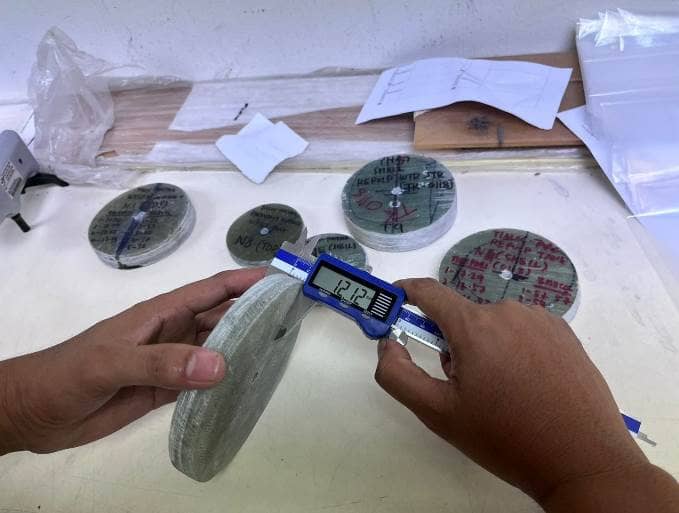100% Defects Sorting Service, Power for Quality and Excellence
In the world of manufacturing and production, the concept of 100% defects sorting service has emerged as a crucial practice to maintain the highest standards of quality. This post delves into the significance, benefits, and various aspects of this essential service.
The Importance of 100% Defects Sorting
-

FRP Tanks Plange Field Inspection Pre Shipment Inspection Quality Assurance. At the core of 100% defects sorting lies the commitment to delivering products that meet or exceed customer expectations. By meticulously sorting out any potential defects, manufacturers can ensure that only flawless items reach the market, safeguarding their reputation and building trust with customers.
- Customer Satisfaction. Customers today are increasingly demanding products that are not only functional but also free from any flaws or imperfections. A 100% defects sorting service directly contributes to meeting these expectations, resulting in higher customer satisfaction and loyalty.
- Brand Image. Maintaining a consistent quality level through 100% defects sorting helps build a strong brand image. It positions the company as one that values quality and reliability, differentiating it from competitors in the market.
Benefits of 100% Defects Sorting Service
- Cost Savings in the Long Run. While it may seem like an additional expense initially, 100% defects sorting can actually save costs in the long term. By identifying and rectifying defects early in the production process, it reduces the likelihood of costly rework or recalls later on, minimizing financial losses.
- Enhanced Productivity. Sorting out defects promptly allows the production line to run more smoothly, minimizing disruptions and increasing overall productivity. So, This ensures that resources are utilized efficiently, resulting in higher output.
- Risk Mitigation. 100% defects sorting helps to minimize the risk of defective products reaching customers. thereby avoiding potential legal issues and damage to the company’s reputation. It acts as a safeguard against potential product liability claims.
- Data-Driven Insights. The process of 100% defects sorting generates valuable data that can be analyzed to identify trends and areas for improvement in the production process. And, This enables continuous optimization and improvement of product quality.
Techniques and Approaches in 100% Defects Sorting
- Visual Inspection. One of the most common methods involves trained inspectors visually examining products for any visible defects. Thus, This can include checking for cracks, discoloration, or misalignments.
- Functional Testing. In addition to visual inspection, functional tests are conducted to ensure that the products perform as expected. Thus, This may include testing electrical components, mechanical functions, or other specific features.
- Automated Sorting Systems. With advancements in technology, automated sorting systems are increasingly being used. Whatmore, These systems use sensors, cameras, and other technologies to detect and sort defects quickly and accurately.
- Sampling and Statistical Analysis. Sampling a portion of the production and conducting statistical analysis helps in determining the overall quality level and identifying potential areas of concern.
Challenges in Implementing 100% Defects Sorting
- Human Error. Despite the best efforts of inspectors, there is always a possibility of human error. Fatigue, distraction, or lack of experience can lead to missed defects or incorrect assessments.
- Complex Product Designs. Some products may have intricate designs or multiple components, making it more challenging to detect and sort all defects accurately.
- Speed and Throughput Requirements. In high-volume production environments, maintaining the speed of the sorting process while ensuring accuracy can be a challenge.
- Cost Considerations. Implementing a comprehensive 100% defects sorting service may involve additional costs, including labor, equipment, and infrastructure, which needs to be balanced with the potential benefits.
Best Practices
- Clear Quality Standards. Establish clear and specific quality standards that define what constitutes a defect. This provides a consistent framework for inspectors to follow.
- Regular Training and Updating. Keep inspectors updated with the latest inspection techniques and product knowledge to improve their ability to detect defects accurately.
- Integration with Production Process. Integrate the defects sorting service into the overall production process to ensure a seamless flow and timely identification and sorting of defects.
- Continuous Monitoring and Evaluation. Regularly monitor and evaluate the effectiveness of the 100% defects sorting service, making adjustments as needed to improve its performance.
- Collaboration and Communication. Foster collaboration between different departments involved in the production process to ensure that any issues related to defects are addressed promptly and effectively.
Conclusion
100% defects sorting service is a critical component of ensuring product quality in today’s competitive manufacturing landscape. By implementing this service, companies can protect their reputation, satisfy customers, and gain a competitive edge. While there are challenges to overcome, the benefits far outweigh the costs. Investing in a robust 100% defects sorting system is an investment in the future success of the business. As technology continues to advance, we can expect even more efficient and accurate methods of 100% defects sorting to emerge, further elevating the standards of quality in the manufacturing industry.
Learn more Successful Arctic module fabrication, steel structure, modular and skid, steelwork, supplier audit, DNV Class, Oil & Gas, welding supervisor, welding quality inspection, CWI CSWIP welding inspector, pump and pipe, stainless steel fabrication and CNAS ISO 17025 9712 NDT NDE practice via below-
https://www.jsc-safe.com/steel-structures-modules-machining/

